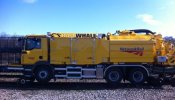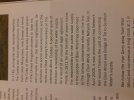Gadget1987's investigations into the well under the floorboards discussed elsewhere made me wonder about unusual sources of water which the railways may have employed for loco and other uses, especially in the absence of mains supplies or direct extraction from rivers. There were no doubt all sorts of careful channelling of springs and streams in remote parts and I think there were water lifters powered by loco steam to fill cisterns at various stabling points (e.g. Fairford). Meanwhile numerous signal cabins and other isolated locations relied on water cans brought in by convenient trains to keep the kettle filled. One of the strangest arrangements of which I am aware were at the hydropathic baths at the Imperial Hotel Great Malvern (originally a railway hotel), which AIUI relied on spring water channelled and piped along the line from its source deep within Colwall Tunnel combined with natural brine water brought in by rail from Droitwich Spa.
Are others aware of other unusual sources and or uses of water in relation to railway operation?
Are others aware of other unusual sources and or uses of water in relation to railway operation?


